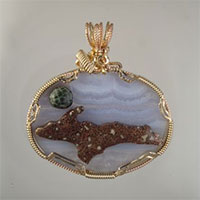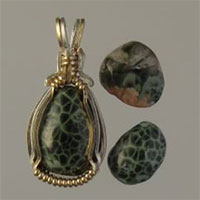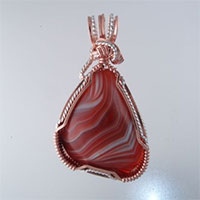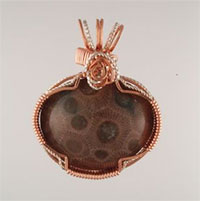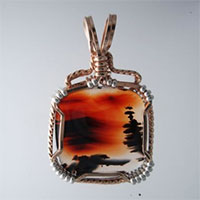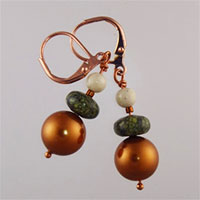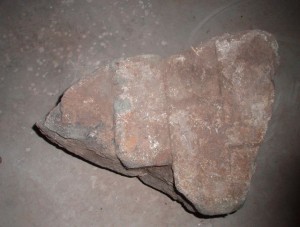
Firebrick shows it's true colors when slabbed. This chunk of firebrick looks ordinary, but it is very heavy.
Copper, over the last century, was the Upper Peninsula’s most important export. Although the mines closed for copper production in the mid-60’s or before, many of the mine structures, including the smelters remained. Over the years these smelters were torn down or crumbled.
The smelter ovens which turned the native copper into molten copper for making ingots were built of brick. Over the years of operation the clays and mortar were gradually replaced with copper from gasses and the molten metal itself. You will see small white flecks within the firebrick. these are the inpermeable silicates within the brick. Much of this brick which we refer to as “firebrick” was saved, while some was used as land fill.
Today firebrick is used to make beautiful bookends, display slabs, and jewelry. I am fortunate to have enough firebrick to make fine jewelry pieces. The firebrick cabochons are either left uncoated for those that like natural aging of their copper, or are coated with an industrial epoxy which makes the jewelry shiny and prevents any oxidation of the copper.
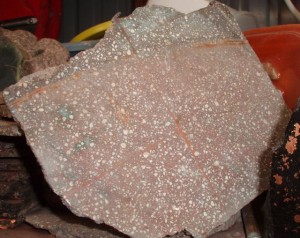
A nice firebrick slab-note the copper mortar lines.
Firebrick is difficult to shape and grind as it gums up diamond wheels. I have to alternate cutting fire brick and agate. The agate removes the copper from the wheel until the next pendant is cut.
For all those that have acquired a pendant made of this historic material from me; thanks. You have a real piece of history.
I can’t believe I do not have a picture of a finished firebrick pendant. I sell them as fast as I can make them and apparently have forgotten to take any pictures. I promise to take photos of the next one I make and post it here.


